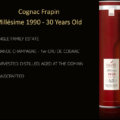Amaretto is a popular almond-flavored liqueur that is most often made with apricot kernels, though the flavor can come from almonds. It’s Italian in origin and is produced throughout the world today, including the Netherlands and the U.S. It remains a favorite liqueur in Italy and has found a home in bars throughout the world. Amaretto is essential to making some of the most popular cocktails and shooters.
- Ingredients: Apricot pits or almonds
- Proof: 42–56
- ABV: 21–28%
- Calories in a shot: 65–69
- Origin: Italy
- Taste: Sweet, nutty
- Aged: At least 3 years
- Serve: On the rocks, cocktails, shots
:max_bytes(150000):strip_icc():format(webp)/Amaretto-135584483-56a171dc3df78cf7726ab4c0.jpg)
:max_bytes(150000):strip_icc():format(webp)/Amaretto-135584483-56a171dc3df78cf7726ab4c0.jpg)
What Is Amaretto Made From?
The name amaretto is derived from the Italian word “amaro.” It means “bitter” and is used to describe bitter aperitifs and digestifs like Amaro Averna. The suffix “etto” adds “little” to the definition, so “amaretto” is often interpreted as “little bitter.”
Though amaretto is thought of as an almond-flavoured liqueur, most quality amarettos are flavoured with apricot pits. Some recipes do use almonds and others employ a combination of the two. The flavour is often from an extract added to a base liqueur. Some amarettos infuse or distil other botanicals, such as vanilla, into the liqueur. They’re often sweetened with dark or burnt sugar and that gives the liqueur its dark amber colour. It can vary from brand to brand, but most amaretto is bottled between 21 per cent to 28 per cent alcohol by volume (ABV, 42 to 56 proof).
Amaretto is a very old style of liqueur and there are a couple of different (though related) stories regarding its creation. As is often the case, the stories come from a popular brand that continues to produce amaretto today.
The first claim is that amaretto was created by the Lazaronni family of Saronno, Italy in 1851. The family had long been known for creating amaretto cookies and found that there was also a market for a sweet liqueur that took on the popular almond flavor.
The second story begins in 1525 with the Renaissance painter, Bernardino Luini, who was commissioned to create a painting of the Madonna. He found his model in a young widow who was an innkeeper and possibly Luini’s lover. This fair woman gave the painter a gift of apricot kernels soaked in brandy. As is common in Italy, her recipe was passed down through the generations. It ended up in the Reina family who, coincidentally, worked for the Lazaronnis in Saronno. Supposedly, this is the same recipe used today in Disaronno Originale, which continues to display the date 1525 on its label.
Amaretto did not make it to the United States until the 1960s. However, it did not take long for American drinkers to fall in love with its delicious flavor.
How to Drink Amaretto
Amaretto can be served on its own over ice for a delicious dessert drink. It’s also popular to serve a shot of amaretto over ice in a tall glass then top it with cola. It’s often paired with vodka, whiskey, and other liqueurs (especially coffee). Amaretto’s very adaptable, mixing with a variety of flavours, from fruits to coffee and cinnamon to ginger. Amaretto is found in creamy cocktails, adds a sweet touch to martinis, and gives a nice depth to fruity highballs. You’ll find it in countless shooter recipes as well. It’s so versatile that amaretto is considered a staple in the modern bar.










